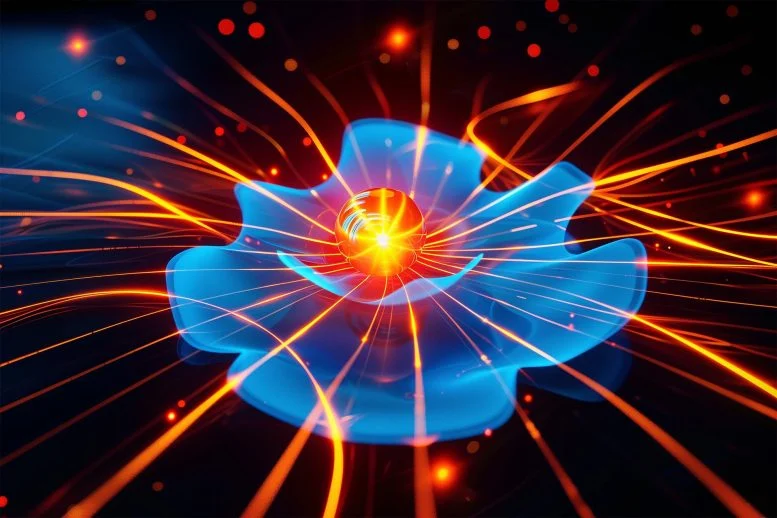
By Helmholtz-Zentrum Berlin für Materialien und Energie March 27, 2025
Collected at: https://scitechdaily.com/magnetic-microflowers-amplify-fields-and-transform-sensors/
Tiny magnetic “flowers” engineered by physicist Anna Palau are redefining how we manipulate magnetic fields.
These metamaterials, designed with petal-like structures, focus magnetic energy to a central point, amplifying it dramatically. Tested at BESSY II using a cobalt rod, they demonstrated the potential to supercharge magnetic sensors and imaging tools. This leap in field concentration could pave the way for more sensitive data storage devices and biomedical applications, all while enabling new kinds of magnetic experiments previously thought impossible.
Microscopic Flowers with Magnetic Power
Under a scanning electron microscope, the new metamaterial resembles a tiny flower. Its “petals” are made of strips of a ferromagnetic nickel-iron alloy. These microflowers can be fabricated in various shapes, with adjustable inner and outer radii, as well as different numbers and widths of petals. This flower-like design focuses the lines of an external magnetic field toward the center of the structure, significantly intensifying the magnetic field in that localized area.

How Magnetic Metamaterials Work
“Metamaterials are artificially produced materials with microstructures whose dimensions are smaller than the electromagnetic or thermal waves they are designed to manipulate,” explains Anna Palau. The physicist is working on magnetic microstructures that can be used in data storage, information processing, biomedicine, catalysis and magnetic sensor technology. By using these metamaterials, the sensitivity of magnetic sensors could be highly increased, as the magnetic field to be detected would be amplified at the center of these systems.
Testing the Microflowers at BESSY II
Anna Palau, her student Aleix Barrera, and Sergio Valencia have now investigated this at the XPEEM experimental station at BESSY II. They placed a cobalt rod in the center of various microflowers as a sensor for the magnetic field and mapped the magnetic domains inside the cobalt rod. “By adjusting the geometric parameters such as shape, size, and number of petals, the magnetic behavior can be switched and controlled,” says Valencia. As a result, the sensitivity of a magnetoresistive sensor could be increased by more than two orders of magnitude.

A Leap in Sensor Sensitivity and Imaging
This innovation opens up new technological options for improving the performance of small magnetic sensors and for developing multifunctional magnetic components. In the future, such microstructures could be used to generate much higher magnetic fields locally, which is also of interest for the experimental XPEEM station at BESSY II.
“Our experimental system is a photoemission electron microscope, so magnetic fields deflect the electrons and make the experiments difficult,” says Valencia.“The maximum magnetic field we can normally apply for imaging is about 25 millitesla (mT). With the magnetic field concentrator, where the field is only locally enhanced, we can easily achieve fields five times higher.”
This is very exciting because it opens up the possibility of studying a range of magnetic systems under conditions that have not been possible before.
Reference: “On-Chip Planar Metasurfaces for Magnetic Sensors with Greatly Enhanced Sensitivity” by Aleix Barrera, Emile Fourneau, Natanael Bort-Soldevila, Jaume Cunill-Subiranas, Nuria Del-Valle, Nicolas Lejeune, Michal Staňo, Alevtina Smekhova, Narcis Mestres, Lluis Balcells, Carles Navau, Vojtěch Uhlíř, Simon J. Bending, Sergio Valencia, Alejandro V. Silhanek and Anna Palau, 6 March 2025, ACS Nano.
DOI: 10.1021/acsnano.5c00422

Leave a Reply